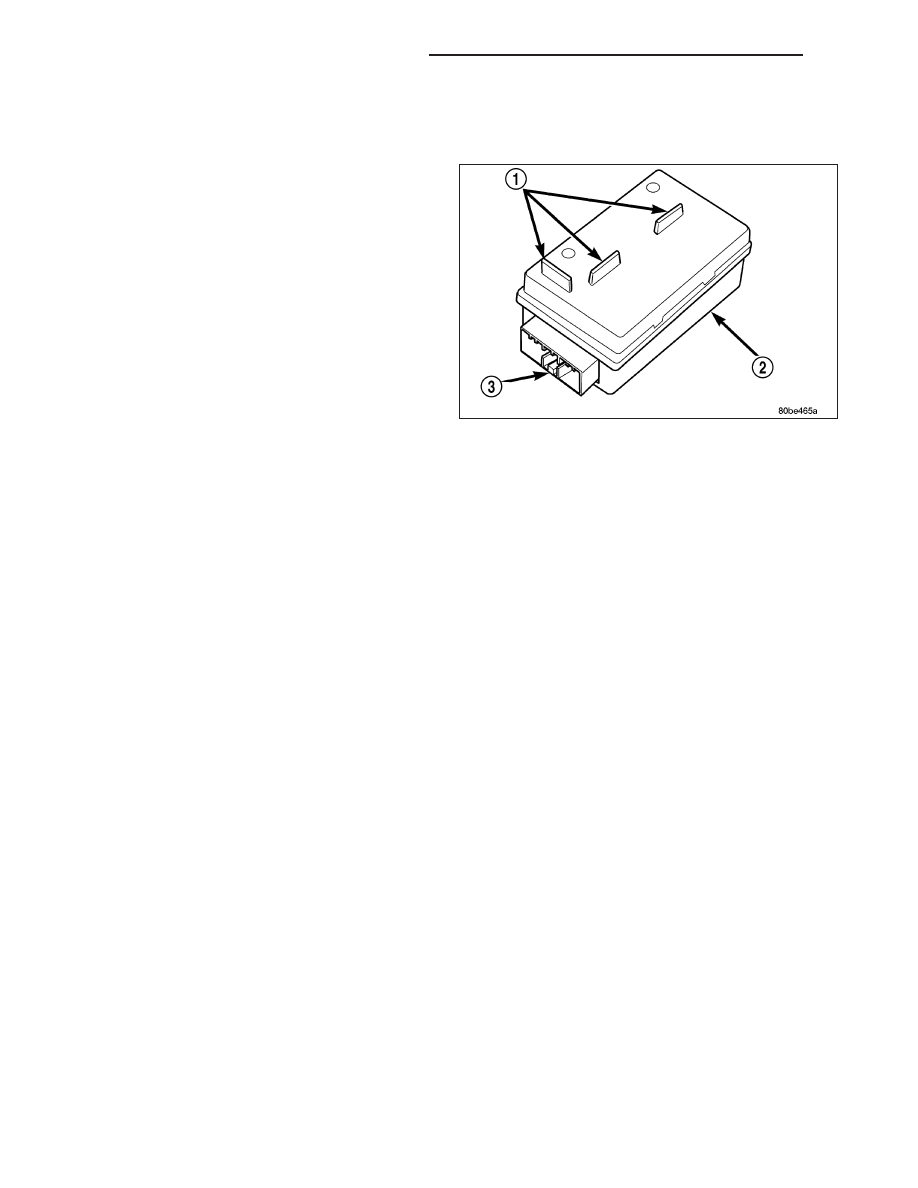Jeep Liberty KJ. Manual - part 39

HEATED SEAT MODULE
DESCRIPTION
The heated seat module (2) is also known as the Seat
Heat Interface Module. The heated seat module (2) is
located under the left front seat cushion, where it is
secured to a mounting bracket via two push-pin retain-
ers. The heated seat module has a single connector
receptacle (3) that allows the module to be connected
to all of the required inputs and outputs through the
seat wire harness.
The heated seat module (2) is an electronic micropro-
cessor controlled device designed and programmed to
use inputs from the heated seat relay, the two heated
seat switches and the two heated seat sensors to
operate and control the heated seat elements in both
front seats and the two heated seat indicator lamp
Light-Emitting Diodes (LEDs) in each heated seat
switch. The heated seat module is also programmed to perform self-diagnosis of certain heated seat system func-
tions and provide feedback of that diagnosis through the heated seat switch indicator lamps.
The heated seat module (2) cannot be repaired. If the heated seat module is damaged or faulty, the entire module
must be replaced.
OPERATION
The heated seat module operates on fused battery current received from a fuse in the junction block. The module
is grounded at all times. Inputs to the module include a resistor multiplexed heated seat switch request circuit for
each of the two heated seat switches and the heated seat sensor inputs from the seat cushions of each front seat.
In response to those inputs, the heated seat module controls battery current to the heated seat elements and sen-
sors, and controls the ground for the heated seat switch indicator lamps (LED’s).
When a heated seat switch (Driver or Passenger) is depressed a signal is received by the heated seat module, the
module energizes the proper indicator LED (Low or High) in the switch by grounding the indicator lamp circuit to
indicate that the heated seat system is operating. At the same time, the heated seat module energizes the selected
heated seat sensor circuit and the sensor provides the module with an input indicating the surface temperature of
the selected seat cushion.
The Low heat set point is about 36° C (96.8° F), and the High heat set point is about 42° C (107.6° F). If the seat
cushion surface temperature input is below the temperature set point for the selected temperature setting, the
heated seat module energizes an N-channel Field Effect Transistor (N-FET) within the module which energizes the
heated seat elements in the selected seat cushion and back. When the sensor input to the module indicates the
correct temperature set point has been achieved, the module de-energizes the N-FET which de-energizes the
heated seat elements. The heated seat module will continue to cycle the N-FET as needed to maintain the selected
temperature set point.
If the heated seat module detects a heated seat sensor value input that is out of range or a shorted or open heated
seat element circuit, it will notify the vehicle operator or the repair technician of this condition by flashing the High
and/or Low indicator lamps in the affected heated seat switch. Refer to Diagnosis and Testing Heated Seat Sys-
tem in Heated Systems for flashing LED diagnosis and testing procedures. Refer to Diagnosis and Testing Heated
Seat Module in this section for heated seat module diagnosis and testing procedures. Also refer to the Body Diag-
nostic Manual for additional diagnosis and testing procedures.
8G - 30
HEATED SEAT SYSTEM-SERVICE INFO
KJ